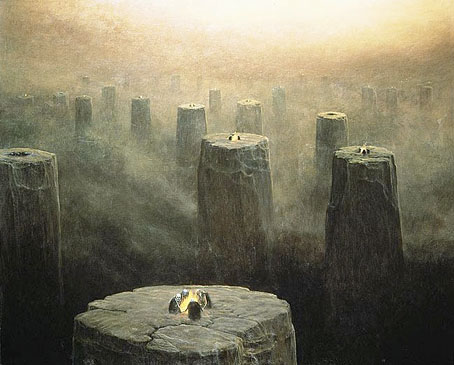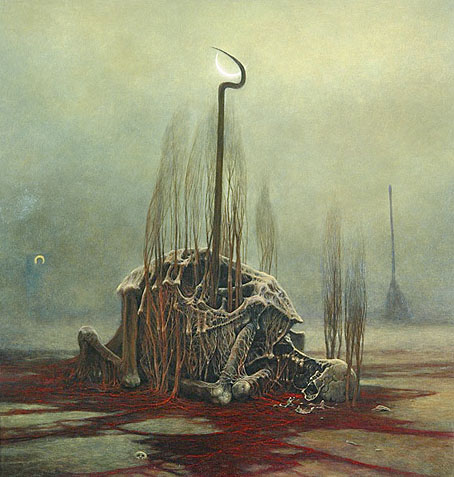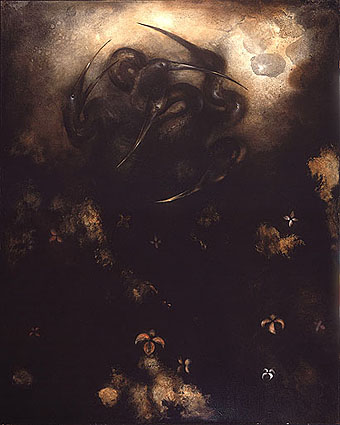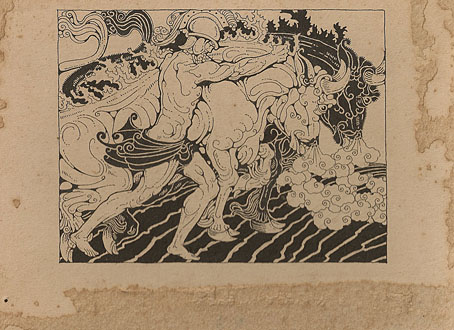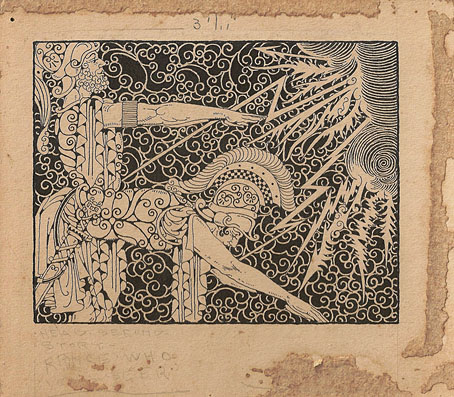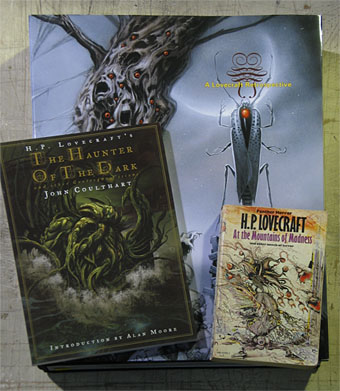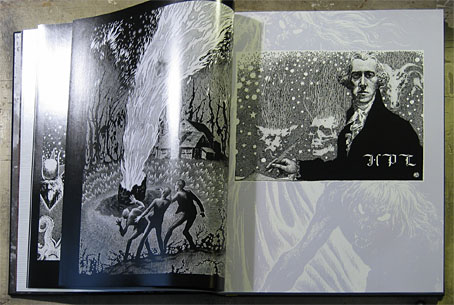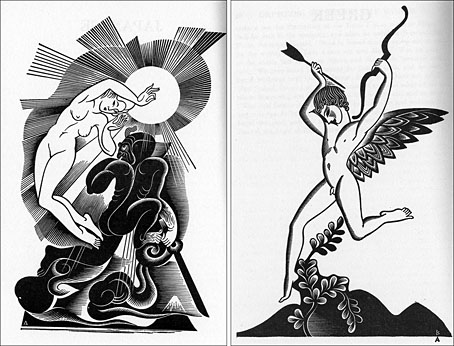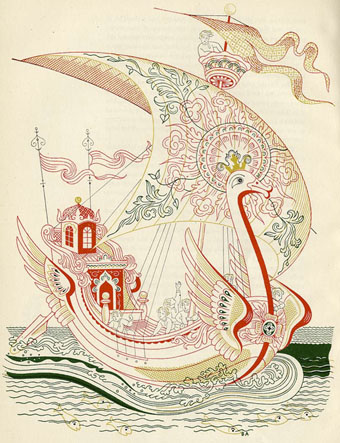DG-2499 (1975) by the fantastic (in every sense of the word) Zdzislaw Beksinski (1929–2005). See the Dmochowski Gallery for a comprehensive collection of the artist’s work. Thanks to BibliOdyssey for the tip.
• More ICA events: From Animism to Zos: Strange Attractor Salon will be “a series of weekly events, consisting of a talk and a film, exploring some lesser-known intersections of culture, history, mind and nature” running from 10 March–12 May, 2011.
• And on May 10, the London Word Festival presents a Dodgem Logic evening with entertainment provided by contributors to that magazine:
Alan Moore’s reinvigoration of the underground fanzine, Dodgem Logic, comes alive in the non-conformist surroundings of Hackney’s Round Chapel. A night of art, comedy, comment and put-something-back localism. (…) With Robin Ince heading up a colossal stand-up bill, artists Steve Aylett, Savage Pencil, Melinda Gebbie and Kevin O’Neill panel-up to talk about their comic work, while music comes from hyperactive racketeers The Retro Spankees. With an exhibition of artwork from the magazine, and conducted by editor-in-chief Alan Moore.
• Taschen publishes a collection of Dennis Hopper’s photographs this week. The Independent has a small selection here. Also new from Tachen, Alex Steinweiss, The Inventor of the Modern Album Cover.
• Bass Notes: The Film Posters of Saul Bass at the Kemistry Gallery, London.
DG-2507 by Zdzislaw Beksinski.
While riding through the bustling streets of London from 1603 to 1621, one was liable to hear the shout “Long live Queen James!” King James I of England and VI of Scotland was so open about his homosexual love affairs that an epigram had been circulated which roused much mirth and nodding of the heads: Rex fuit Elizabeth: nunc est regina Jacobus—”Elizabeth was King: now James is Queen.”
There’s more about the private life of the man who gave his name to the King James Bible here.
• Addams and Evil, a Tumblr devoted to the great Charles Addams.
• Hannes Bok again at Golden Age Comic Book Stories.
• Caravaggio’s crimes exposed in Rome’s police files.
• Deserted City, photographs by Kim Høltermand.
• The blue sand dunes of the planet Mars.
• A map of the ghost signs of Chicago.
• The movie title stills collection.
• The pitfalls of e-book buying.
• Life On Mars? (1971) by David Bowie | Uncle Sam’s On Mars (1979) by Hawkwind | Eyes On Mars (1980) by Chrome | Cache Coeur Naif (1997) by Mouse on Mars.

